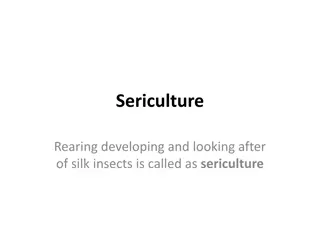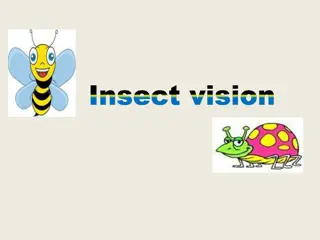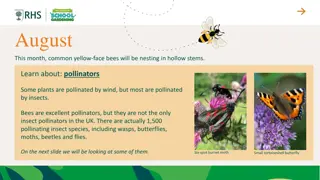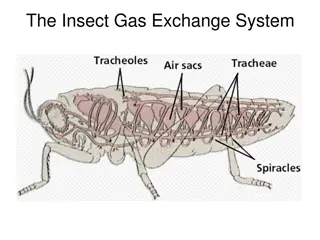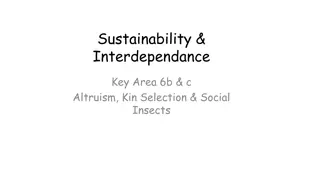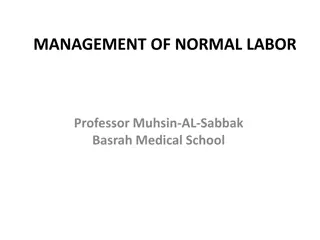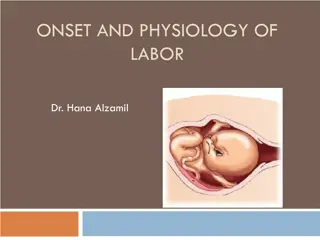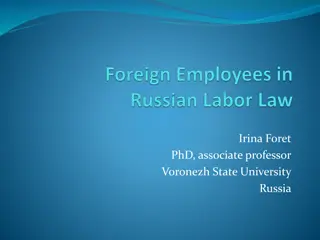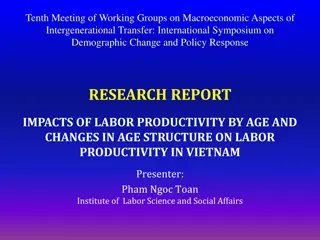Evolution of Division of Labor in Humans and Social Insects
Evolutionary advantages of cooperation and specialization led to a developed system of social cooperation and division of labor in humans and social insects. Despite vast differences, these species have conquered the earth due to common characteristics. The puzzle lies in why only a few species evolved this way, and why thinkers like Mandeville focused on human virtues rather than similarities with other species. The paper explores the principles, organization, and barriers of the division of labor in different species.
Download Presentation

Please find below an Image/Link to download the presentation.
The content on the website is provided AS IS for your information and personal use only. It may not be sold, licensed, or shared on other websites without obtaining consent from the author. Download presentation by click this link. If you encounter any issues during the download, it is possible that the publisher has removed the file from their server.
E N D
Presentation Transcript
Why only humans and social insects have a division of labor? Ugo Pagano Universit di Siena 30-31 March 2023
Division of labor in distant species O. E. Wilson has pointed out in his book The Social Conquest of the Earth (Norton 2012, New York), social species include around two thirds of the earth s biomass. These social species humans and social insects are located at extreme forms of life. The queens of small social insects produce thousand of larvae, whereas the much larger human females invest heavily in their children who are directly born with an even relatively larger brain. In spite of these amany other obvious differences, social insects and humans have conquered the earth because of common characteristics: a very developed system of social cooperation and an articulated division of labor
The puzzle If there are evident evolutionary advantages of cooperation and specialization, why did only few species were able to increase their fitness in this way? Why did these characteristics emerge in such extremely different forms of life? Or, in other words, why thinkers such as Mandeville had to find it convenient to tell stories of human virtues and vices as a Fable of the Bees rather than in terms of a Fable of the Chimps with whom we share so many more genes?
Structure of the paper available at: https://academic.oup.com/cje/issue/44/1 Principles of the division of labor. The evolution of a cooperative division of labor in insect societies. The organization of primate societies and the emergence of the human division of labor The barriers to the development to the division labor in the evolution of other species.
Babbage Principle of the division of labour "That the master manufacturer, by dividing the work to be executed into different processes, each requiring different degrees of skills or force, can purchase exactly that precise quantity of both which is necessary for each process; whereas, if the whole work were executed by one workman, that person must possess sufficient skill to perform the most difficult, and sufficient strength to execute the most laborious, of the operations in which that art is divided."(Babbage, 1832 pp.137-8).
According to Babbage The division of labour entails: - the exploitation of the principle of comparative advantage (because it allows each individual to perform only that activity for which she is comparatively more gifted). - a dramatic saving of training time. If each worker is performing all the tasks necessary for a certain productive process , it also becomes necessary that each worker learn all these tasks. By contrast if a very detailed division of labour happens to be introduced, and each worker is assigned only one task, then she obviously has to learn only that task. The principle can also be applied to intellectual work, even after the introduction of Babbage s calculating engine.
Adam Smiths principles of the division of labour. - division of labour. There is little comparative advantage to be exploited before the introduction of the division of labour. The differences in skills arise as a consequence of the introduction of the division of labour. - The Smithian principles of the division of labour are dexterity saving of time otherwise spent on changing occupation, and invention of machines by workmen. Specialization favours the acquisition of job-specific skills. - Decentralized market exchanges (and not the centralized planning of the master-manufacturer) are the driving force of the division of labour. - In turn market exchanges are possible because of the human capabilities to communicate by the means of a sophisticated language. The difference in skills more a consequence than a cause of the improved
Smith vs. Babbage Babbage concentrates on the advantages due to an optimal utilization of given skills made by a cost minimizing manufacturer Smith concentrates on the advantages of the division of labour for acquisition of new skills made possible by market exchanges. According to Babbage the division of labour increases productivity because it minimises the amount of learning which is required for doing. According to Smith: the division of labour increases productivity because it maximizes the amount of learning acquired by doing. For Babbage: the learning necessary for the doing should be minimized For Smith: the learning due to the doing should be maximized.
Social insects: the traditional explanation The traditional explanation of the cooperative division of labor, existing in some insect societies, has been based on the Hamilton (1964) rule. The Hamilton rule relates the degree of altruism of individual towards other individuals to the degree to which they share the same genes. If each selfish gene maximizes its fitness, some degree of altruism can only be shown towards closed relatives. Social insects share the same queen mother and have a degree of relatedness greater than that existing in the other species. This would explain their altruism and their consequent cooperative behavior, leading to a sophisticated division of labor.
O. E. Wilsons Criticism In the bees or ants societies, only Queens transmit their genes. The altruism or the selfishness of the other social insects is therefore irrelevant to explain their behavior. O. E. Wilson (2012) We can also add that altruism cannot by itself explain why cooperation takes the sophisticated mode of the division labor, in which different individuals of the population specialize in different and interdependent tasks. Wilson (2012) has been harshly criticized by Dawkins (2012) and nicely reviewed by Gadagkar (2010) and Gintis (2012). The puzzle to be solved is how non-social insects could evolve into social insects with a centralized production system and specialized infertile offspring and could generate a complex division of labor.
Gadagkars Transition Societies In wasps' societies the fertilization system has the mixed characteristics of a transition society. Whilst some wasps have an individual reproduction system similar to that of non-social insects, some others join as workers a common nest ruled by a Queen specialized in the production of larvae. In the Queen's nest workers are still potentially fertile. They can do better than isolated wasps, which do not share the common facilities (for instance, defence) existing in the nest. The workers can hide their own offspring in the Queen's nest. Sometimes, they have also the chance of organizing a coup d' tat and, if successful, can become Queens.
From Wasps to Bees The survival and reproduction strategies, carried out in the Queen's nest, involve both cooperation and conflict. For instance, while everyone cooperates in raising the larvae, the workers try to smuggle their eggs in the nest, going against the fitness of the Queen. A possible strategy of the Queen is to produce unfertile offspring that specialize in different functions. This mutation, genetically transmitted and reinforced from Queen to Queen, can easily spread to the entire population. The nests, where the Queen's strategy is adopted, can outcompete the other nests by decreasing the cost of conflicts and by capturing the gains of specialization.
Smith and Babbage in the world of insects. The Smithian advantages of the division of labor do not have an important role. Learning by doing is negligible and even the Queen seems to have the complete genetic information necessary to the foundation of a a new community. Moreover, no market exchange takes place in insect societies. By contrast some principles analogous to the ones indicated by Babbage seem to be working in insect societies.
The Insects Queen as a Master Manufacturer Like Babbage s Master Manufacurer the Queen minimizes her costs. Her reproductive effort (instead of training time cost) is minimized by employing exactly that precise quantity of reproductive effort which is necessary to enable each insect to perform a particular function. Moreover, the division of labor is organized by the Queen on the basis of comparative advantage: - the big ants have an absolute advantage in both fighting and carrying staff, but they have not a comparative advantage in carrying staff. Hence, they specialize in fighting. - the small ants, having a comparative advantage in carrying food, specialize in that activity.
Primates vs. Insects 1) In primate societies, sex consumes much energy and involves many fights (among males). By contrast social insects are characterized by little energy dedicated to sex. Males are in subordinate positions. Most fights are among females. 2) Female insects can produce an enormous number of children. Primates (including humans) can produce only few. 3) In the case of mammals, great individual care is required for each offspring. Insects can rely on large numbers of larvae requiring comparatively little individual initial investment and care. The pre-condition of the insects' division of labor is that one female (the Queen) can specialize in the reproductive function outsourcing to others the remaining tasks. This route towards a complex division of labor is not available to mammals.
Chimps and over-investment in fertility signals Like many other species, female chimps advertise very much their fertility periods. What matters is not simply to advertise but also to signal with greater efficacy than other females. Female receptivity, other fertility signals (smell, visual signals etc.) and length of the receptivity period undergo a process of positional competition. The reinforcement of fertility signals is likely to come to a rest at the point where the energy invested in the positional advantage equals the fitness sacrifice due to forgone alternative investments. Males react by making huge positional investments in insemination capacities. By contrast they invest little in exclusive access as their size similar to that of female shows. They do not invest in the protection of their offspring (that they cannot identify!).
Under-investing in fertility signals: gorillas However, if the female fertility signal is fairly low and short, it may be convenient to make it even lower and shorter. Males, facing a lower cost of monitoring the entire fertility period, can invest in the exclusive access of females and in the protection of their offspring. Gorillas belong to this minority category. Males make huge positional investment in body size to fight other males and get exclusive access to females. The strongest males are able to control a good and large territory where some females may choose to live and reproduce. The short and weak fertility female signal can be well perceived only within the territory controlled by the dominant male. If a male gorilla is strong enough, the harem can be easily controlled. Male gorilla's sexual attributes are very small. They have evolved as an efficient adaptation to sexual monopoly.
The gorillas territory as a wasps nest Similarly to the wasps' nest, the territory controlled by the male gorilla is a locus of conflict and cooperation. Female gorillas can increase their fitness by joining the harem of a silverback. Similarly to a wasp, a female gorilla could reproduce outside the territory of a dominant male. However, the eventual fitness benefits of multiple inseminations would be negligible in comparison to the fitness loss related to the forgone advantages of the silverback cooperation and in particular of his protection against predators. The female gorilla finds it convenient to cooperate in the harem. However, she finds also convenient to device conflictual strategies to attract more attention than the other females.
A transition primate society? Also the gorilla territory is not only a place of cooperation but also a locus of conflict. Each female belonging to the harem may gain in fitness by receiving more attention by the silverback. The two signals of fertility (female receptivity and "mechanical" signals in the form of color and smell) may be manipulated and disentangled. A female, who can extend her behavioral receptivity signals and hide her mechanical signals, may attract more attention than the other females. A dynamics of extended receptivity signals and of decreased mechanical signals is well possible. With a zero or very low mechanical signals, the silverback loses the criterion to monitor a particular female. Sexual conflict may involve a disintegration of the harem system. Similarly to wasps, the gorilla arrangements can be seen as those of a transition society.
The consequences of a negligible mechanical fertility signal A negligible mechanical fertility signal opens the way to smaller harems and eventually to widespread monogamy. More important, the techniques of control have to change. The absence of short and weak fertility signal makes male physical strength a much weaker tool to secure exclusive access. Female self- monitoring and her assessment become very important. Communicating trust and reciprocity attitudes stimulate paternal investment. More sophisticated language capabilities than the birds' melodies or the gibbons' love singing (indicated by Darwin as precursor of the human language) are required for this purpose. A brain-intensive understanding of potential partners and rivals become necessary to make convenient deals. Communication capabilities, the Smithian requisites for the division of labor, are favored by this new type positional competition.
In medio stat virtus? A complex division of labor could be reached in two opposite ways: with minimum and maximum initial parental investment. The social insect road was a l Babbage. It evolved by outsourcing functions to unfertile offspring requiring minimum reproductive effort and exploiting the principle of comparative advantage. The human road was a l Smith. It evolved by maximizing the learning capabilities of a large brain requiring maximum reproductive effort. In between these two extreme cases, both evolutionary roads towards a complex division of labor were closed and only the species existing at the extremes of life could realize what O. E. Wilson calls the social conquest of the world. (Non) est modus in rebus!
A final remark The social movements revolting against the factory system based on the Babbage principle have often claimed that Capitalism was doing violence to human nature. In Marx words the better formed his product, the more deformed becomes the worker . The claim may seem moralistic. However, there is some evolutionary evidence supporting it. Humans evolved their division of labor by developing their learning capabilities. However, some of them were later forced to organize according to principles of the division of labor characterizing the other extreme of life.


